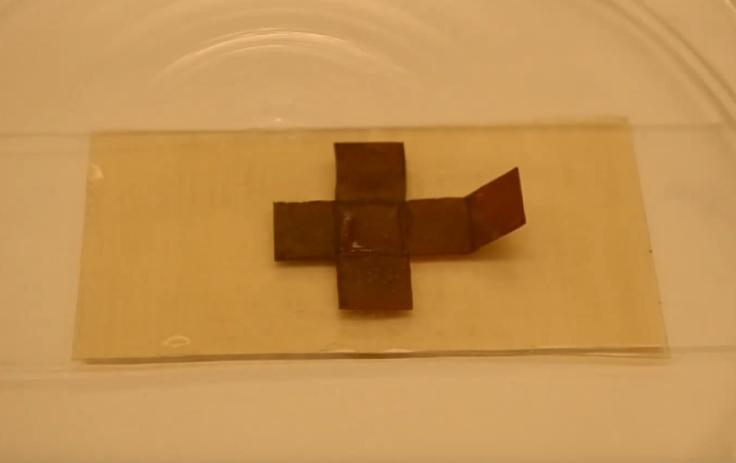Furniture of the future? Scientists invent shape-shifting, self-healing smart material that can assemble itself
Scientists have produced material that comes to life when exposed to heat or light.
The world of manufacturing could be about to see a revolution after scientists have produced a shape-shifting smart material that can assemble and disassemble itself when exposed to heat or light.
Researchers at Washington State University developed the multi-functional material in what is believed to be a world's first to boast shape memory behaviour and well as light-activated movement and self-healing functions.
The team released a time-lapsed video of the material in action and it showed a clump of material that, when exposed to heat, come to life and unfurl into a shape and then reassemble itself back into its original state when there was a change in temperature. The material was also able to bend when light was directed onto its surface.
Such smart materials could have manufacturers and the space industry drooling as it may offer a future of self-assembling products without the need for tools or mechanisms. Thoughts of an Ikea flatpacked wardrobe blossoming to completion in front of your eyes is an appealing one. More likely uses could be for space satellites that could unravel solar-powered panels when in orbit without the need for powered mechanicals. Other applications could see drug-carrying capsules open up when inside the body to release medicine or scratched metal objects fixing themselves by applying ultraviolet light.

Scientists have been studying smart materials for many years but the finding a substance that's affordable to manufacture as well as offer all these qualities has been a struggle. The researchers from WSU managed to develop a new material combining several elements including liquid crystalline networks that offer single-direction array as well as light-sensitive atoms.
The researcher team's press release explains: "The resulting material reacts to light, can remember its shape as it folds and unfolds and can heal itself when damaged. For instance, a razor blade scratch in the material can be fixed by applying ultraviolet light. The material's movements can be pre-programmed and its properties tailored".
Should the material be produced in mass quantity we wonder whether it could be applied to cars, meaning self-repairing bodies in the event of a crash. It is likely to be a long way until we see this outside of the lab but it's an encouraging development.
© Copyright IBTimes 2025. All rights reserved.






















